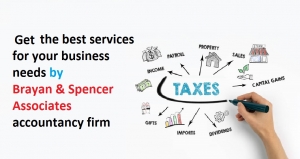Many individuals still choose to invest in property to build wealth. One approach that has received considerable attention is negative gearing. When investors fully understand this strategy, they often pay less tax and gain valuable, physical assets. If you're thinking about negative gearing, this post explains it for investors.
Understanding Negative Gearing
You can calculate negative gearing by determining if the investment property's expenses outweigh its income. Such expenses may include mortgage interest, maintenance costs, property management fees, etc. A paper loss occurs whenever the expenses exceed the rental income, which means the investor can offset their taxable income from other sources with the loss.
Benefits of Negative Gearing
One of the main benefits of negative gearing is that you may lower your taxable income. You can offset the loss from other money you earned, directly decreasing the total amount you owe in taxes. The immediate nature of this deduction can offer some financial relief, which is a crucial benefit if you are in a higher tax bracket.
The other is the likelihood of long-term growth in assets. Investors realise that property may be in the red initially but expect property values to increase over the years. That jump in worth means you could pocket some serious cash when you sell the place.
Risks and Considerations
Despite its advantages, negative gearing is not without risks. Your home's worth might rise or fall; you can't count on continually rising. Investors must remain prepared for the possibility that their property may not increase in value as expected. Think about it: this strategy often means you'll need a reliable income to keep paying for any money you lose. Not everyone has that kind of steady cash flow.
Also, don't forget how much interest rates really matter here. If interest payments increase, companies spend more money, which worsens their cash flow problems. Investors must consider whether they can hold up the investment through different cycles.
Tax Implications and Strategies
Negative gearing's knock-on tax concessions and tax benefits are its most crucial attractions. Reducing taxable income can equate to saving a considerable amount on taxes. Non-negligible tax laws/regulations are another aspect to keep updated on since the strategy's applicability can easily change as tax laws and rules change.
It's often smart for investors to talk with professionals like AssetBase. They can clear up all those confusing rules for you. Imagine getting every tax break you deserve. They'll help you spot those deductions and keep your tax paperwork perfectly in line with what the law says. Financial pros also check if negative gearing makes sense for your big picture. They see how it stacks up against your other money goals.
Alternatives to Negative Gearing
Negative gearing is good, but property investors have plenty of ammo other than just negative gearing. Another possibility is positive gearing, where expenses are less than rent. If you're an investor who likes getting money regularly, this plan immediately delivers cash flow.
Alternatively, some may consider investing in regions with lower property prices but higher rental yields. This plan helps you stay safe financially. You spend less money to start, but still get the most rent possible.
Long-Term Investment Goals
When considering negative gearing, aligning it with a long-term financial objective is essential. Investors should weigh their comfort with risk, personal funds, and current market happenings. While short-term tax savings are appealing, the ultimate goal should be capital growth over time.
Mixing things up is also super important. It's dangerous to put all your eggs in one basket. Savvy investors scatter their capital across various asset categories. This strategic allocation mitigates exposure to singular market volatility and amplifies the probability of superior cumulative returns.
Conclusion
Savvy investors employ negative gearing, which lets them reduce their tax burden concurrently with increasing their real estate assets. You'll want to move carefully by checking for potential problems, what the market is doing, and how your money looks. If this tactic fits in with your overall financial plan, you will know, and with that knowledge, you can seek out proper guidance as needed. Tax savings always sound enticing, but the emphasis should be on sustained growth and financial security.






